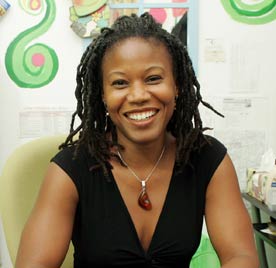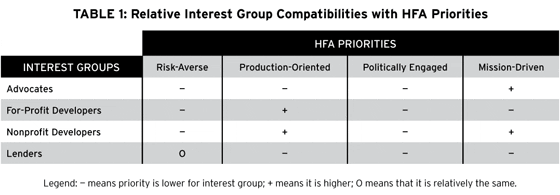Although some green-collar jobs are in new occupations, most are existing jobs that require knowledge about new green practices. But the key factor is whether the job advances two complementary goals: improving the environment and providing family-supporting wages or a career ladder.
“Our green future will be invented at the local level,” insists Jones, founder and president of Green For All. “We are on the cusp of incredible change. We hope that this publication helps people in cities across the country realize their own dreams of a strong green economy that provides pathways to prosperity for people in need.”
The community-development movement should be embracing green as a new paradigm for our work — not just adding LEED certification for our brick and mortar, but more importantly as a strategy for local economic and employment development to improve the health and wealth of our communities and constituents. That’s what we are striving to do in Chicago.
LEEDing the Way
“The Local Economic & Employment Development (LEED) Council in Chicago has been striving to lead the way in green development for 26 years as a delegate agency of Chicago’s Department of Planning & Development. The department works with businesses in the North River Industrial Corridor, which follows the Chicago River northwest from downtown. This area is home to a diverse business base from Vienna hot dogs to Wrigley gum; from Water Saver Faucets to C.H. Robinson, a global third-party logistics firm. While we identify solutions for business expansion and retention, the second “E” in our mission is for “employment,” providing job training and placement for low-skilled, unemployed people to match local employment needs.
In 2004, LEED Council began promoting green or sustainable development as a new programming area to improve air quality and to mitigate traffic congestion as a demonstration corridor for the regional Clean Air Counts campaign of the Metropolitan Mayors Caucus. As part of our strategic plan, we define “sustainable development” as fostering economic growth while reducing environmental impact. LEED Council now has several projects within the context of our local economic and employment development mission to encourage both green business growth and skills training for green jobs.
The council is encouraging business and community awareness and adoption of green practices, such as the use of non-toxic paints and cleaning products. It is promoting the use of public transit with the corporate sponsorship of an express bus that links to commuter rail. It is working with member businesses to decrease emissions by promoting energy efficiency. And it is also striving to improve the ecological footprint of the corridor by advancing new technology for alternative fuels, recycling, and green building development.
Spurred by LEED Council’s public information efforts, council member Chicago Scenic Studios voluntarily started using low VOC (volatile organic compound) paints in 2006 to participate in Clean Air Counts’ regional goal of reducing polluting emissions by five tons per day. According to Bob Doepel, the company’s founder and owner, “our change was calculated to reduce emissions by 616 pounds that year.” Stressing what a difference even one small, first step of this kind can make, Doepel says, “Today, implementing sustainable practices and reducing energy consumption have become essential for our business and our clients, whether they be Oprah Winfrey or the public art project, Cool Globes, that we did in the summer of 2007.”
From Shuttered Factory to Green Business Hub
Many communities throughout the country, especially here in the Midwest, are faced with shuttered factories; but these liabilities can have new life as valuable assets for green businesses. When Chicago lamp maker Frederick Cooper revealed in 2004 that it planned to close down its factory at US 94 (Kennedy Expressway) and Diversey Avenue, many expected that the factory would become a condominium development. In fact, one of the city’s biggest condo developers was ready to sweep in.




Comments